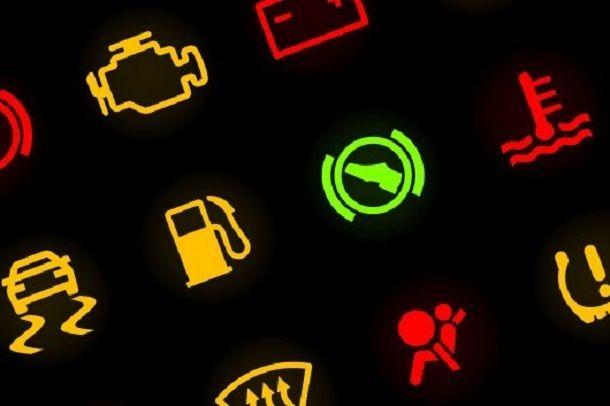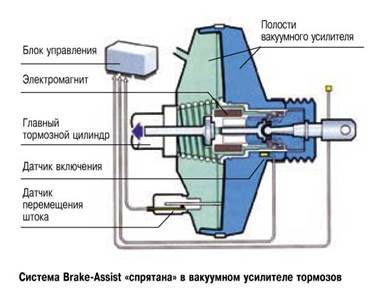
Car controls: check engine, snowflake, exclamation point and more
Content
 Indicators on the dashboard show the operation of various vehicle components and their malfunctions. We show them and describe what they mean. Sometimes different faults can be subordinated to one lamp. So let's do an initial diagnosis before we replace anything.
Indicators on the dashboard show the operation of various vehicle components and their malfunctions. We show them and describe what they mean. Sometimes different faults can be subordinated to one lamp. So let's do an initial diagnosis before we replace anything.

Grzegorz Chojnicki has been driving a 2003 Ford Mondeo for seven years now. A car with a two-liter TDCi engine currently has 293 miles. km of run. Several times stood in the service due to the failure of the injection system.
He had trouble starting the engine the first time and lost some power. The yellow bulb with the glow plug was on, so I changed the spark plugs in the dark. Only when the failures did not stop, I went to an authorized service station to connect the car to the computer, says the driver.
Read more: Spring inspection of the car. Not only air conditioning, suspension and bodywork
It turned out that the problem was not in the candles, but in the errors in the injector software, as evidenced by the glowing indicator with the candle symbol. When history repeated itself, Mr. Grzegorz did not replace the parts himself, but immediately went to computer diagnostics. This time it turned out that one of the nozzles broke completely and needed to be replaced. Now the indicator lights up from time to time, but after a while it goes out.
– The car consumes more fuel. I already have a diagnosed pump failure that will need to be regenerated,” says the driver.
Controls in the car - first of all the engine
Car manufacturers attribute most breakdowns to the yellow engine symbol warning light, which is found mostly in gasoline engines. Like other lamps, it should go out after starting. If this is not the case, you should contact a mechanic.
- After connecting the car to the computer, the mechanic receives an answer, what is the problem. But an experienced person can accurately diagnose many faults without connection. Recently, we dealt with an eighth generation Toyota Corolla, whose engine did not run smoothly at high speeds, reluctantly responding to pressing the gas pedal. It turned out that the computer signaled problems with the ignition coil, says Stanislav Plonka, a mechanic from Rzeszow.
Read more: Installing a car gas installation. What do you need to remember to benefit from LPG?
As a rule, the yellow engine signals problems with everything that is controlled by the computer. These can be spark plugs and ignition coils, a lambda probe, or problems resulting from incorrect connection of the gas installation.
– The glow plug indicator light is the diesel equivalent of the engine indicator light. In addition to the injectors or the pump, it can report problems with the EGR valve or the particulate filter if the latter does not have a separate indicator, explains Plonka.
Are the lights on the car red? Do not eat
A separate light is used by many manufacturers, for example, to signal excessive brake pad wear. This is usually a yellow lamp with a shell symbol. In turn, information about problems with the brake fluid can be subordinated to the luminous handbrake indicator. When the yellow ABS light is on, check the ABS sensor.
– As a rule, the movement cannot be continued if the red indicator is on. This is usually information about a low oil level, too high engine temperature, or problems with the charging current. If, on the other hand, one of the yellow lights is on, you can safely contact the mechanic, says Stanislav Plonka.
How to read the dashboard?
The number of lamps may vary depending on the vehicle model. In addition to informing, for example, about the type of headlights, icing on the road, turning off the traction control system or low temperature, all of them should go out after the ignition is turned on and the engine is turned on.
Indicators in the car - red indicators
Battery. After starting the engine, the indicator should turn off. If it doesn't, you're probably dealing with a charging issue. If the alternator is not running, the car will only move as long as there is enough current stored in the battery. In some cars, the blinking of the light bulb from time to time can also indicate slippage, wear on the alternator belt.
Read more: Ignition system malfunction. The most common breakdowns and repair costs
Engine temperature. This is one of the most important parameters for the correct operation of the car. If the arrow rises above 100 degrees Celsius, it is better to stop the car. Just like the red coolant temperature light (thermometer and waves) comes on, an overheated engine is almost a compression problem and needs a major overhaul. In turn, too low a temperature may indicate problems with the thermostat. Then the engine will not suffer from such consequences as overheating, but if it is underheated, it will consume much more fuel.
Machine oil. After starting the engine, the indicator should turn off. If not, stop the vehicle on a level surface and allow the oil to drain into the sump. Then check its level. Most likely the engine is experiencing lubrication problems due to lack of oil. Driving can cause the drive assembly to seize, as well as the turbocharger that interacts with it, which is also lubricated by this fluid.
Hand brake. If the brake is already worn out, the driver will not feel that he has not fully released it while driving. Then a red indicator with an exclamation point will report about it. This can be very helpful, as driving for long periods of time, even with your arm slightly outstretched, increases fuel and brake consumption. Brake fluid problems are also often referred to under this lamp.
Read more: Pre-Purchase Vehicle Inspection. What and for how much?
Seat belts. If the driver or one of the passengers is not wearing their seat belts, a red light will come on in the instrument panel with the symbol of a person in the seat and seat belts. Some manufacturers, such as Citroen, use separate controls for each seat in a car.
Indicators in the machine - orange indicators
Check the engine. In older vehicles this may be a lettering, in newer vehicles it is usually the engine symbol. In gasoline units, it corresponds to a diesel control with a spring. It signals any failure of electronically controlled components - from spark plugs, through ignition coils to problems with the injection system. Often, after this light comes on, the engine goes into emergency mode - it works with less power.
EPC. In the cars of the Volkswagen concern, the indicator shows problems with the operation of the car, including due to a malfunction of the electronics. It may come on to signal failure of the brake lights or coolant temperature sensor.
Power steering. In a serviceable car, the indicator should go out immediately after ignition. If it is still lit after starting the engine, the vehicle is reporting a problem with the electronic power steering system. If the power steering is still working despite the light being on, the computer may tell you, for example, that the steering angle sensor has failed. The second option - the indicator light and electric assistance are turned off. In cars with electronic systems, in the event of a breakdown, the steering wheel turns very tight and it will be difficult to continue driving.
Weather threat. In this way, many manufacturers inform about the dangers of low outside temperatures. This is, for example, the possibility of icing the road. For example, a Ford launches a snowball, and a Volkswagen uses an audible signal and a flashing temperature value on the main display.
Read more: Step by step installation of daytime running lights. Photoguide
ESP, ESC, DCS, VCS The name may vary depending on the manufacturer, but this is a stabilization system. A lit indicator light signals its operation, and therefore, slippage. If the indicator light and OFF are on, the ESP system is disabled. You have to turn it on with a button, and if it doesn’t work, go to the service.
Window heating. The lamp next to the marking of the windshield or rear window indicates that their heating is turned on.
Glow plug. In most diesels, it performs the same function as the "engine check" in gasoline engines. It can signal problems with the injection system, particulate filter, pump, and also with glow plugs. It should not light up while driving.
Read more: Maintenance and battery charging. Maintenance free also requires some maintenance
Air bag. If it does not go out after starting the engine, the system informs the driver that the airbag is inactive. There can be many reasons for this. In a non-accident car, this could be a connection problem, which will disappear after lubricating the ankles with a special spray. But if the car had an accident and the airbag deployed and did not recharge, the warning light will indicate this. You also have to wonder about the lack of this control. If it doesn't light up within a second or two of being triggered, it's likely been disabled to hide the airbag launch.
Passenger airbag. The backlight changes when the pillow is activated. When it is not active, for example when a child is being transported in a rear-facing child seat, the warning light will come on to indicate that the protection is deactivated.
ABS. Most likely, these are problems with the emergency braking assistance system. This usually results in damage to the sensor, the replacement of which is not expensive. But the indicator will also be on, for example, when the mechanic incorrectly installs the hub and does not allow the computer to receive a signal that the system is working. In addition to the ABS indicator, many brands also use a separate brake pad wear indicator.
Indicators in the machine - indicators of a different color
Lights. The green indicator is on when the parking lights or low beams are on. Blue light indicates that the high beam is on - the so-called long.
Open door or damper alarm. In vehicles with more sophisticated computers, the display shows which doors are open. The car will also tell you when the back door or hood is open. Smaller and cheaper models do not distinguish between holes and signal the opening of each of them with a common indicator.
Air conditioning. Its work is confirmed by a burning indicator, the color of which can change. This is usually a yellow or green light, but Hyundai, for example, now uses blue light.
Governorate Bartosz
photo by Bartosz Guberna

